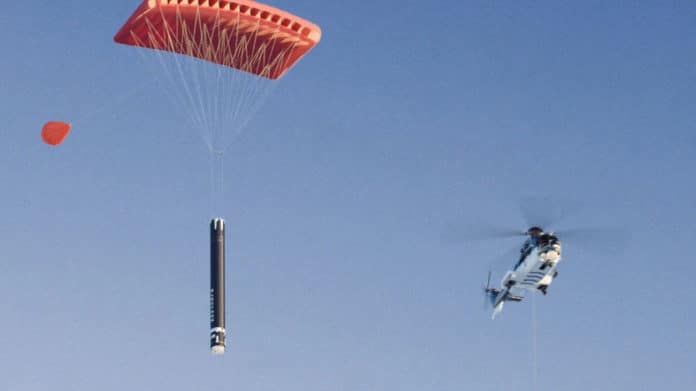New Zealand-based Rocket Lab has successfully completed a mid-air recovery test. It has managed to catch the first stage of its Electron launch vehicle, which was lowered by parachute in mid-air with a helicopter.
Ultimately, the company hopes to make its rockets reusable, like SpaceX. But unlike self-landing on a floating platform, a missile is intercepted by a helicopter in the air.
Rocket Lab has been developing the Electron two-stage ultra-lightweight rocket since 2012. This carrier is capable of displaying payloads weighing up to 225 kilograms in low Earth orbit, and up to 150 kilograms on solar-synchronous orbit. The missile is planned to be used primarily to launch micro- and nanosatellites. But it practically does not require a complex and expensive spaceport and launchpad for launches.
The launch vehicle, after the launch, returns back by parachute but gets damaged when it hits the water. To prevent this from happening, the helicopter will have to pick it upright in the air and take it back to the spaceport.
The parachute system of the return stage consists of the main dome, as well as a small auxiliary parachute, which extends and stabilizes the hook cable. During the tests, the closed in on the descending stage and captured it mid-air at around 5,000 ft, using a specially designed grappling hook to snag the parachute’s drogue line and then drove it to the base and gently lowered it to the ground.
Now, Rocket Lab experts have begun preparations for a new phase of testing the Electron return stage. In these tests, using a helicopter, it is planned to catch the already complete first stage of the launch vehicle, equipped with a full set of equipment. These tests are planned for late 2020.
However, the COVID-19 pandemic, which is also impacting the space sector, risks upsetting its calendar, since most of its employees resort to telework.
